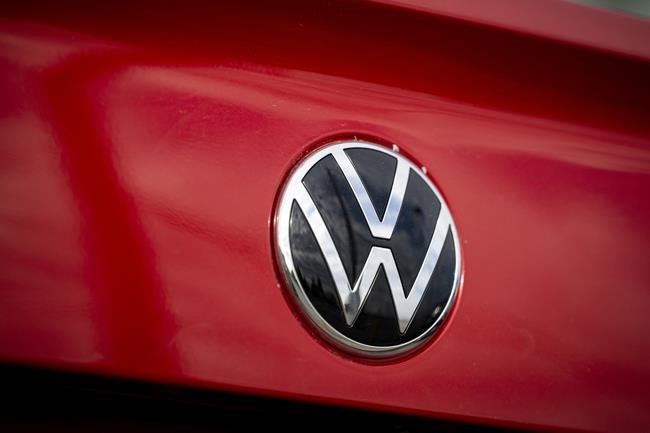SAINT THOMAS, Ont. — There's nothing small about the $13 billion in subsidies that Canada has promised Volkswagen to secure the automaker's first battery plant outside of Europe, but it remains to be seen whether the deal is enough to kick start the manufacturing sector's future.
The rising sticker shock of establishing a manufacturing base for electric vehicles is, depending on who you ask, either a worthy investment to secure the next generation of auto assembly or a sign that Canada should consider giving up the subsidy race and not worry so much about the sector in general.
Securing Volkswagen is a "massive win," said Flavio Volpe at the Automotive Parts Manufacturing Association, adding that people should focus more on the $200 billion in output the company will have to meet to secure the full payout.
Because the deal is based on output rather than just an upfront cash payment from government, it looks much bigger than past deals with automakers but is fundamentally different, he said.
"You either have to restate what the other deals cost before, or admit that we're doing an apples to oranges comparison."
The subsidy closely mirrors what's offered in the U.S. Inflation Reduction Act that contains some $370 billion in funding to create a cleaner economy, and is designed to spur the volume of production needed to meet targets. It comes as governments worldwide are looking to secure the future of auto sectors as the industry undergoes the tectonic shift to a fully electric future.
Auto assembly plants have long been pointed to as anchors for regional economies as they create numerous spinoff jobs for each worker in the plant, whether from parts suppliers or the restaurant down the street. Battery plants won't create as many because there are fewer parts involved, but still offer a conservative two-to-one ratio, said Volpe.
Securing VW's first plant outside of Europe at the St. Thomas, Ont. site also leaves room for more potential investment from the automaker, as Volpe notes that the land base the company has secured is five times bigger than the footprint in Windsor, Ont., where Stellantis and LG are building their battery plant.
If it were to be filled out, the potential is massive, said Volpe.
"This site, at full build, will be the biggest automotive industrial site in Canadian history."
The auto industry, however, and the economy in general is already humming, and Canada has numerous wins on electric vehicles already that secure an electric vehicle manufacturing base. The situation means it doesn't seem to make much sense to spend so richly to establish the Volkswagen plant, said Rob Gillezeau at the University of Toronto's Rotman School of Management.
"We're basically at full employment," said Gillezeau, assistant professor of economic analysis and policy. "It's basically going to take workers who already have jobs in one area, right and reallocate them to working at the plant."
He raised doubts about the economic models justifying the plant and the supposed payback on the investment in a few years, and noted that Canada is already shifting more to a service economy so it doesn't make sense to throw this much money at manufacturing jobs.
"I don't think there's an inherent advantage there. I think really, the only good rationale for government subsidization here would be if we think there's some kind of national security risk."
Whether the plant is necessary or not, Canada did need to step up on subsidies to secure it, said Greig Mordue, chair in advanced manufacturing policy at McMaster University.
He said the clean energy, labour talent pool and proximity to critical minerals that Industry Minister François-Philippe Champagne has touted as key differentiators don't actually hold that much sway compared with what competing locations like the U.S. offer.
"You strip away those three items that the minister has talked about as most appealing, you start to discount them you start to say, 'Well, what was it? Well, it must have been the incentive.'"
He predicted a subsidy number north of $10 billion, similar to what has come forward, just because it follows the especially generous subsidies the U.S. has promised.
"You're applying logic to an illogical situation, and this is what we're looking at," said Mordue. "It's a little breathtaking, but that's what it is."
This report by The Canadian Press was first published April 21, 2023.
The Canadian Press


